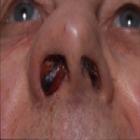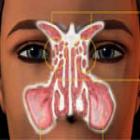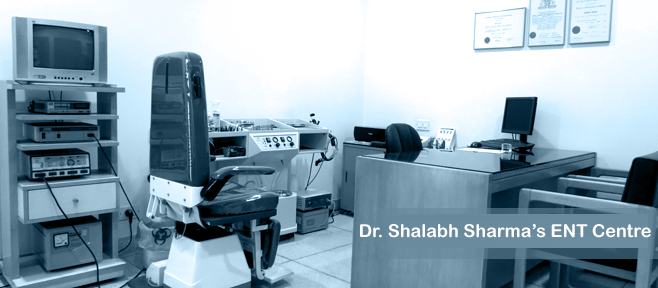How is hearing loss diagnosed?
Hearing loss can be diagnosed within a few days of birth. Tests such as BERA, ASSR, Impedance audiometry, OAE and BOA (behavioural observation audiometry) can all be carried out and a complete diagnosis made. These tests will confirm the presence of any hearing loss and tell us the degree/severity of hearing loss also. Most of the time the exact site of damage can also be ascertained.
What is the impact of hearing loss on a child?
Reduced listening skills
Lifelong language deficits
Lifelong communication deficits
Poor basic reading skills
Poor ability to learn to write
Compromised academic career
Behaviour, self esteem, mental health & social skills are also affected.
Is it important to diagnose hearing loss early?
Early diagnosis is very important in the management of hearing loss. This is why most developed countries have Universal Hearing Screening Program's in which all new born babies are tested for hearing loss immediately after birth.
A child's brain is very plastic and can learn new tasks easily, such as hearing. As the child hears, new pathways develop in the brain and the child learns to understand speech and language. With time, the child learns to speak and express himself. If the diagnosis is delayed, then the child starts hearing sound late in life. By the age of 6-7 years, the child's brain has lost it's plasticity. That means that the child will find it difficult to learn new tasks at this age.
This is the reason that children who are diagnosed early and who receive either hearing aids or cochlear implants at an early age (depending on the severity of hearing loss) tend to do very well compared to older children.
Hearing aids are beneficial upto what degree of hearing loss?
Hearing aids are beneficial in children and adults who have a hearing loss between 25-70 decibels (mild to moderately severe hearing loss). Anyone with a hearing loss of more than 70decibel needs to be fitted with a cochlear implant.
How does a hearing aid work?
Hearing aids are simply amplifiers of sound. Some are very sophisticated in terms of technology, but they all have a limitation in that they do not provide benefit to someone with a hearing loss greater than 70db (decibels).
What is a cochlear implant and how does it work?
A cochlear implant is an electronic device that provides hearing sensation to those with severe to profound hearing loss. This device consists of two parts. One is the internal part that is placed under the skin behind the ear by a surgical procedure. The other part is the external part called the processor that is used behind the ear like a hearing aid. This processor collects the sound with the help of microphones and digitises it into FM radio waves. These waves pass across the skin to the internal implant where they are converted into electrical impulses. These impulses then reach the cochlea thru the electrode and they stimulate the hearing nerve fibres directly. Hence, the implantee hears sound.
How successful are cochlear implants?
Cochlear implants are a modern medical miracle. They have helped lakhs of children and adults hear sound, learn speech and language. Since the first implant in a child in 1985, they have helped children go to normal schools and colleges and develop near normal hearing, speech and language. These children are now socially useful and productive members of society.
What is the process to get a cochlear implant?
Once the hearing (audiological) tests have confirmed that there is a severe hearing loss, the decision is made to implant the child. A CT and MRI scan of the inner ear and hearing nerves is conducted to confirm that the anatomy of the cochlea is grossly normal and that the patient can be implanted. Then some basic blood and urine tests are carried out. After this a cochlear implant surgery can be performed. This procedure usually takes between 1-2 hours.
How early can a child be implanted?
My youngest child is 8 months old, but children as young as 6 months are being routinely implanted in some centres in the world.
Can an adult be implanted?
Cochlear implants are very effective in adults who lose their hearing at any stage in their lives. This may be due to age-related hearing loss, accidents, infections and many other reasons. My oldest patient is over 87 years old.
How common is severe hearing loss in India?
An estimated 50,000 babies are born in India every year with severe to profound hearing loss. Most of them need a cochlear implant. However at the moment, only an estimated 1,500 children in India under the age of 4 have a cochlear implant!
All you ever wanted to know about nasal polyps!

What are nasal polyps?
Inflammation of the lining(mucosa) of the nose and sinuses can cause swelling of the lining. When there is a lot of swelling, polyps are formed. These are bags of soft flesh and look like small white grape like structures.
What factors contribute to polyp formation?
Long-standing infection, allergy or a disorder of the nerve supply of the nose can cause polyps. Patients allergic to house dust and aspirin are more prone to developing polyps. Asthma patients are also at a higher risk.
What problems does the patient have?
The patient may have no problem at all, or may have a feeling of congestion or block in the nose. Watery nasal discharge or a feeling of something going from the back of the nose into the throat are common symptoms.
Loss of taste and smell, headaches, pressure sensation in the face and sinusitis may occur. Sometimes the polyps may be seen coming out of the nose.
What investigations are required?
After a complete examination of the patient, nasal endoscopy, allergy tests and a CT scan may be required.
How are polyps treated?
Treatment may be medical or surgical, depending on the number of sinuses involved by polyps. In patients with small polyps, it is worth trying medical therapy. This consists of intra-nasal steroids with oral antihistamines. Sometimes, oral steroids may also be indicated.
Large polyps are best removed by FESS or Functional Endoscopic Sinus Surgery.
How is the operation done?
FESS is done by using small telescopes called endoscopes attached to a camera. The surgeon operates by watching the view on a television screen. All instruments are passed through the nostrils and no cuts are made on the patient’s face. A special instrument is the latest in the treatment of nasal polyps. This is known as the Microdebrider and it has a tip which sucks in the polyps and then cuts them in a fast but controlled manner. In this way, the operation is quick and relatively bloodless.
Why is FESS the best surgical treatment?
More complete removal of the polyps is possible only by FESS & Microdebrider. This leads to a low rate of recurrence.
Can the polyps occur again?
In a few cases, the polyps may begin to form again. If the patient comes regularly to the surgeon after the operation, then this polyp formation can be detected early and treated with topical steroids in the form of nose drops or a spray. Oral steroids may also be needed. This usually takes care of the polyps. Hence, periodic follow-up is essential after the operation.
Getting your facts right about sinusitis!

What is sinusitis?
Sinusitis is an inflammation of the lining of one or more of your sinuses usually caused by a bacterial infection. The nasal membranes become swollen and can cause a blockage of the openings between the sinuses and the nose. This blockage usually causes a build up of mucus or muco-pus in the sinuses. This gives a feeling of pressure or congestion or even pain.
What factors contribute to the development of sinusitis?
Many factors contribute to the development of sinusitis. They include colds, allergies, nasal polyps, a deviated septum, bronchial asthma, smoking, air pollution, and low humidity. Any of these may irritate the sinuses, causing blockage that results in poor mucus drainage. In children, other factors like adenoids, tonsillitis may also play an important role.
Infections can be bacterial, viral, or fungal. Because the mucus membranes of the nose extend into and line the sinuses, a bacterial infection in the nose can easily spread to the sinuses. In some cases, dental disease can also spread to the sinuses, causing sinusitis.
What are the symptoms of sinusitis?
Headaches and pressure around your eyes and nose are usually the first and most severe symptoms of sinusitis. Also, you will probably have a runny nose with yellow-green discharge, congestion, and postnasal drip. You may even have a fever as a result of an infection. In children, the typical symptoms may not be present and nasal obstruction, chronic cough, foul smelling breath and behavioral changes are additional symptoms that may indicate the presence of sinusitis.
What is the treatment of sinusitis?
The treatment of sinusitis may involve several approaches:
- Antibiotic therapy to cure the infection responsible for the fever, pain, and blockage
- Topical nasal sprays and/or oral decongestants to reduce the swelling and promote drainage of the sinuses
- Pain medication as needed
- Surgical treatment may be necessary in those cases of recurrent sinusitis and chronic sinusitis not responding to medical treatment.
What is the modern surgical treatment for sinusitis and is it safe?
FESS has been the gold standard of treatment for sinusitis that does not respond to medication. It is a safe and effective procedure. However, in the last 7 years, a novel and minimally invasive procedure called Balloon Sinuplasty has shown excellent results in the treatment of chronic sinusitis. In this procedure, a thin balloon catheter is introduced into the sinus opening and the balloon is inflated. Then the catheter and balloon are withdrawn. The success rate is over 95%. And so far in the world over 2,00,000 sinuplasties have been done with no serious complications. This is because there is no cutting of bone or tissue in this procedure. It can also be done under local anaesthesia.
How is the operation done?
The aim of the operation is to open or enlarge all the sinus openings which are blocked. This lets air into the sinuses and allows the secretions from the sinuses to come out into the nose. Once this is done, the infected sinuses usually come back to normal within a few weeks.
The operation is done using special endoscopes and there are no cuts on the face.
Can sinusitis develop again after the surgery?
After the surgery, the patient will still catch the common cold just as any normal person, and the cold will last for the usual 5-7 days. However, the patient will not suffer from the symptoms like headaches etc. and will improve quickly with medication.
In a few cases of polyps, the polyps may grow again after the surgery but can usually be controlled by medication and regular visits to the surgeon for endoscopic cleaning.
Call us at
Vasant Vihar:
Tel: 26146877, 26140774
Sir Ganga Ram Hospital:
Tel: 42254000, 42251080
Articles
- - How is hearing loss diagnosed?
- - All you ever wanted to know about nasal polyps!
- - Getting your facts right about sinusitis!
Our Services
- - Balloon Sinuplasty
- - Cochlear Implants
- - Minimally Invasive Endoscopic Sinus Surgery
- - Nasal & Sinus without nasal packing

